Warm autoantibodies can be tough challenges. Two physician experts share some best practices to help guide your practices.

Drs Alyssa Ziman and Meghan Delaney
Patients with warm autoantibodies always seem to appear at the worst times! To those of us working in blood banks, navigating the path from discovery of the antibody to a safe transfusion is fraught with challenges.
They Did Their “BEST”
Drs Alyssa Ziman and Meghan Delaney (in cooperation with the excellent folks at the BEST Collaborative) decided to do something to make the pathway clearer a few years ago. They embarked on a multi-year journey to discover, through a massive literature search as well as a survey of practices in numerous facilities, what people around the world are actually doing to evaluate warm autoantibodies and get to the place where a transfusion can occur that is as safe as possible. Their findings, published in a 2017 Transfusion article and a 2020 Vox Sanguinis article (see below for links), will show you tools and practices that will help you, no matter the size of your hospital. They are both here today to discuss their major findings and learning lessons from the papers.
Disclaimer
The opinions expressed here are just that, opinions. This educational podcast interview is not a medical consultation nor is it meant to represent the only possible options available. Please follow the guidance of local transfusion experts and regulations.

Drs Alyssa Ziman and Meghan Delaney
They Did Their “BEST”
Drs Alyssa Ziman and Meghan Delaney (in cooperation with the excellent folks at the BEST Collaborative) decided to do something to make the pathway clearer a few years ago. They embarked on a multi-year journey to discover, through a massive literature search as well as a survey of practices in numerous facilities, what people around the world are actually doing to evaluate warm autoantibodies and get to the place where a transfusion can occur that is as safe as possible. Their findings, published in a 2017 Transfusion article and a 2020 Vox Sanguinis article (see below for links), will show you tools and practices that will help you, no matter the size of your hospital. They are both here today to discuss their major findings and learning lessons from the papers.
Disclaimer
The opinions expressed here are just that, opinions. This educational podcast interview is not a medical consultation nor is it meant to represent the only possible options available. Please follow the guidance of local transfusion experts and regulations.
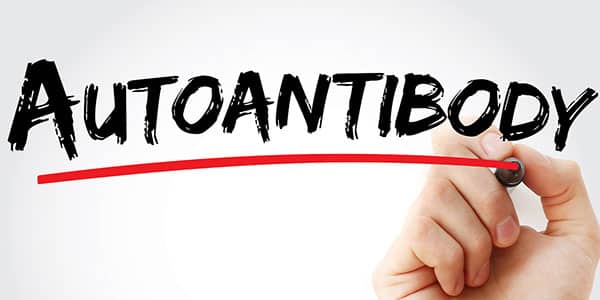
About My Guests:
Dr. Alyssa Ziman is Division Chief of Transfusion Medicine and Medical Director of the Clinical Laboratories at Ronald Reagan UCLA Medical Center, Chief of Laboratory Medicine, and Professor of Pathology and Laboratory Medicine at the David Geffen School of Medicine at UCLA. She completed her undergraduate studies at University of California, Los Angeles (UCLA), and her medical school studies at the Sackler School of Medicine, University of Tel Aviv. She subsequently completed her anatomic and clinical pathology training, followed by a fellowship in Transfusion Medicine, at Cedars-Sinai Medical Center. Dr. Ziman’s research focuses on immunohematology, transfusion practice and patient safety, as well as donor safety and motivating factors in blood donors.
Dr. Meghan Delaney is Chief of the Department of Pathology & Laboratory Medicine at Children’s National Health System in Washington, DC, as well as Professor in the Departments of Pathology and Pediatrics at the George Washington University School of Medicine. She is board-certified in Clinical Pathology as well as in Blood Banking/Transfusion Medicine. Dr. Delaney has authored or co-authored over 60 papers in peer-reviewed journals, and 18 book chapters, and over 40 abstracts. She speaks all over the world on a wide variety of topics in adult, pediatric, obstetric, and molecular Transfusion Medicine.
DISCLAIMER: The opinions expressed on this episode are those of my guests and I alone, and do not reflect those of the organizations with which either of us is affiliated. Neither my guests nor I have any relevant financial disclosures.
Further Reading:
- 2017 Transfusion Paper: Best Practices: Ziman A et al. Warm-reactive (immunoglobulin G) autoantibodies and laboratory testing best practices: review of the literature and survey of current practice. Transfusion 2017;57;463–477.
- 2020 Vox Sanguinis Paper: Does Matching Help?: Delaney M et al. Red‐blood‐cell alloimmunization and prophylactic antigen matching for transfusion in patients with warm autoantibodies. Vox Sanguinis 2020;115;515–524.
Thanks to:
- Samantha Chaffin, Design and content consultant
Music Credit
Music for this episode includes “Cuando te invade el temor” and “Reflejo,” both by Mar Virtual via the Free Music Archive. Click the image below for permissions and license details.




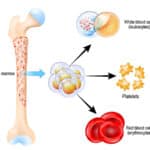

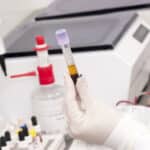



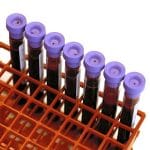

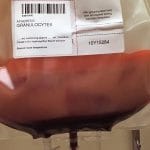
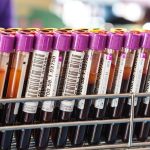
This is my top podcast for impact to practice and understanding the challenges in Blood Bank for the last 5 years! I love how these talented, dedicated, & educated ladies brought data to support our practice dealing with patients who are challenging to care for in the blood bank. Dr. C – I really appreciate your hosting skills as you bring conversations from the new CLS/CLT to extending the practicing practitioner! This episode was pure GOLD.
Wow, thanks, Andrea! I totally agree that both Meghan and Alyssa are brilliant, and hosting this episode was mostly just staying out of their way. My goal with every episode is to help my guest take difficult topics and make them practical, and Alyssa and Meghan more than fulfilled that aim.
-Joe
Another great practical podcast !!! Thanks Drs. Ziman and Delaney for sharing your research findings and you own labs’ practices. A follow up question- Dr Ziman mentioned that her current policy is to provide Rh and K matched blood to patient with warm autoabs (and not to provide extended matched products that also match for Jk, Fy, MNS). How does this make subsequent pretransfusion workups easier (since you still have to be concerned about the potential of alloantibodies to these other clinically significant antigens)? For example do you omit the requirement to do rule outs for the Rh and K if only Rh and K matched blood is transfused? Thanks again.
Hi Jose.
Thank you for your comments!
At our institution, we provide partial phenomatched RBC units (Rh and K) for transfusion given the potential to reduce alloantibody formation and as an effective strategy for simplifying future immunohematology work-ups. Given that patients with autoimmune hemolytic anemia can have high red cell transfusion requirements, we chose to generalize the evidence from retrospective studies in the sickle cell patient population that observed lower rates of alloimmunization with transfusion of Rh and K matched RBCs. If alloimmunization rates are lower, future immunohematology work-ups may be less complicated. Additionally, knowledge of a history of Rh matched transfusion in conjunction with the patients phenotype can guide selection of absorption cells (potentially limiting alloadsorption studies to 2 cells instead of 3 cells) and aid with the interpretation of new reactivity and identification of new clinically significant alloantibodies. This advantage does not negate the need for an accurate transfusion history (for example, to identify transfusions at other hospitals) or the need to rule out all underlying alloantibodies (including Rh and K).
Hi Joe, crystal clear as always, and very helpful for a clinician such as myself on lab medicine rotations! A quick question about testing for AIHA: if an antibody screen has previously been performed and is negative (e.g., for anemia and possible need for transfusion), can we assume that the DAT will also be negative (if wanting to perform a hemolysis work-up)? I don’t want to order a test unnecessarily if that test is redundant.
Hi Alastair. The DAT is really an essential part of any workup for AIHA. In many ways, it defines AIHA, in combination with clinical and laboratory evidence of hemolysis (keep in mind, though, that positive DATs occur more often without hemolysis than with it!). So, no one would ever criticize you for ordering at DAT along with your other labs when evaluating a patient for AIHA. Here’s the thing, though: If someone truly has AIHA, they will, at that point, almost always have a positive antibody screen, because the autoantibody reacts broadly against all RBCs in a pattern known as a “panagglutinin.” Any transfusion service or reference lab that sees that pattern will almost certainly perform a DAT as part of their workup, so you likely won’t have to order it in most cases! Finally, it is important to know that a small proportion of people with AIHA (up to 10% or so) will have a negative DAT (because we are creative, we call that “DAT-negative AIHA”; insert eye roll here!). Hope that helps, and thanks for the kind words!
-Joe
Great podcast! I think warm autos can be very confusing to understand for the untrained blood banker, but this discussion really elucidated many aspects of warm autos. One question I have for you all is a question my supervisor had after listening to this podcast, and that is: what is “saline IgG” exactly? Is it another form of anti-IgG or is it simply two drops of saline as your potentiator?
Thank you.
Hi Sean,
Thank you for your comment. Your question about saline IgG is a great question, one that comes up often.
Saline IgG is a method to detect antibody using anti-IgG reagent after proper incubation and wash without adding any additives/enhancers prior to incubation and wash steps. This is considered the least sensitive method compared to LISS, polybrene, peg, etc. To use saline IgG method alone requires longer incubation time, at least 30 min (vs. 15 min using peg or LISS).
For known warm autoantibody (WAA) cases, using this method may reduce the reactivity of WAA and allow for detection of underlying alloantibody(-ies) if present, without performing time-consuming adsorption procedures. However, one limitation is that this technique may miss some weak antibodies.
At UCLA, we also use saline IgG with ficin and DTT when we try to identify an HTLA.
Hope this explanation is helpful.
Thanks for your answer. In our country we don’t use this method. I didn´t find articles about it… At first, you only incubate the blood sample at 37ºC and wash and then you add anti-IgG reagent? It´s a procedure to wash away the WAA? After the incubation and wash one would expect a lower reaction to anti IgG?
Thank you!
Thank you for the educational talk.
Maybe I have missed it from the podcast or paper, but is there any evidence that by providing phenotype-matched blood, one can prevent giving antigen-positive blood to patients with concurrent alloantibodies, and thereby preventing haemolytic transfusion reactions? I think that’s one of the important reasons why we give phenotype-matched blood to patients with warm autoantibodies urgently in need of transfusion, because we are worried about a concurrent alloantibody yet do not have time to work up for it yet.
Dear Vivian –
Thank you for listening to our interview and for your excellent question. Our study looked at new alloimmunization after transfusion in patients with warm autoantibodies, and did not specifically assess for evidence of hemolytic transfusion reactions post transfusion.
You are correct in that when the transfusion service is unable to complete a work-up and rule out underlying alloantibodies prior to urgent transfusion, provision of phenotype-matched blood to patients with warm autoantibodies, can prevent a hemolytic reaction due to an unidentified alloantibody.
Furthermore, there is the concern that the transfused red blood cells are susceptible to destruction by the WAA. There are some small single center studies covered in our review paper that do look at the RBC survival with patients transfused with WAA. Shirey et al did not find evidence of increased hemolsysis (Shirey et al, Transfusion, 2002). Theoretically, if the autoantibody is IgM, lytic or fixes complement, then it may be causing destruction, but this tends to be more in line with a diagnosis of autoimmune hemolytic anemia rather than a “bystander” warm autoantibody causing in vivo destruction.
Take care!
Hi, Dr. Chaffin. I just had a question. On at least 2 podcast you have called “least incompatible” to be stupid. I am not sure if you gave a good reason why is that stupid besides the obvious reason; least incompatible is still incompatible. I was just curious about this. Thank you.
Trisin, I’m glad you asked. Some have gently chided me for saying that I think “least incompatible” is a dumb phrase, but I stand by it. The problem is not so much in the term itself (though the double negative bothers me; why not “most compatible”?), but more that it’s a meaningless term to those outside of the Transfusion Service. Too often, I hear blood bankers reassuring those who order blood that their patient who has warm autoantibodies can safely receive RBCs because “we are using the least incompatible units!” Well, no, that’s not why it’s safe. In fact, the transfusion is as safe as it can be because we’ve looked for alloantibodies and we’ve matched phenotypes between donors and recipients when necessary (listen to the episode above for more on that). You can read more about my feelings on the dopey term here and read an editorial on this topic by Dr. Larry Petz (from all the way back in 2003!).
Thank you so much Dr. Chaffin! Yes, I completely agree with you. I am currently working on my MSTM, and I am thinking of doing my thesis on one of the 3 main reasons for panagglutination; high incident antibodies, multiple alloantibodies, and warm auto-antibodies. I am leaning towards the topic of warm autoantibodies and how it affects the patient and the blood bank. Yes, I have listened to the above podcasts, several times to be honest. Anyways, thanks again! Your input is always amazing and greatly appreciated!
*sorry, I meant high incident antigens, not antibodies.
sorry, another mistake. I meant, antibodies to high incident antigens! Ack!
Should we proceed with Autoadsorption even if the Eluat negative is?
Also DAT ++++ with IgG, Auto Anti-e (known) but now ist panaglutinin in the serum but the Eluat negativ. Saline IgG negativ.
Thank you